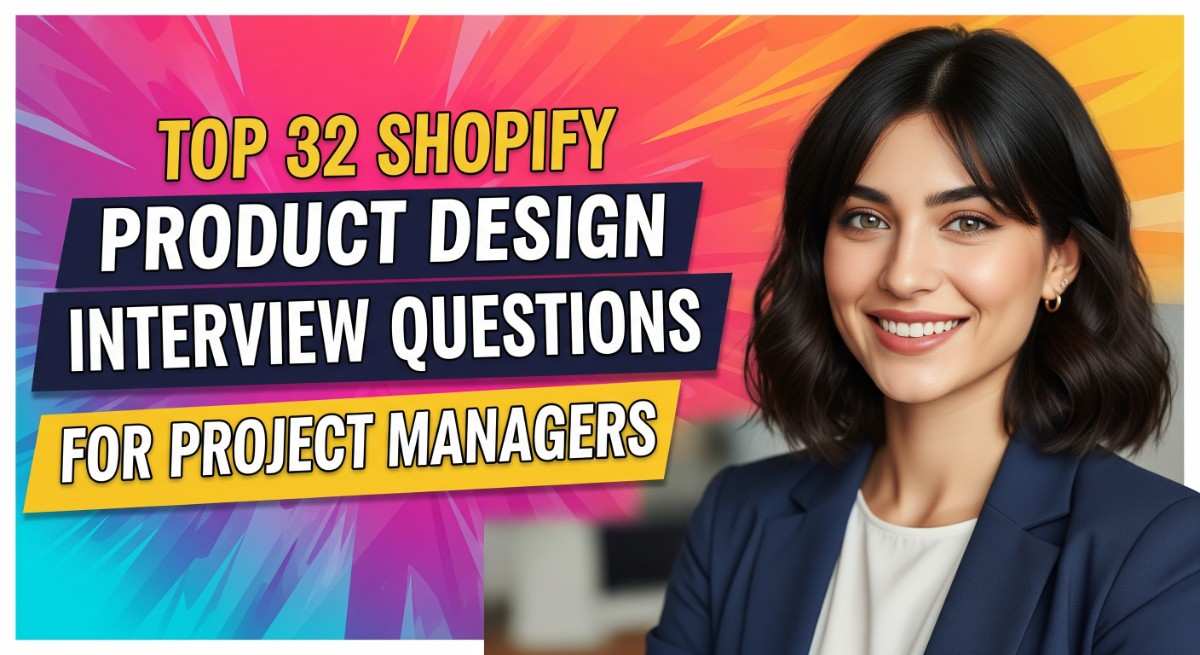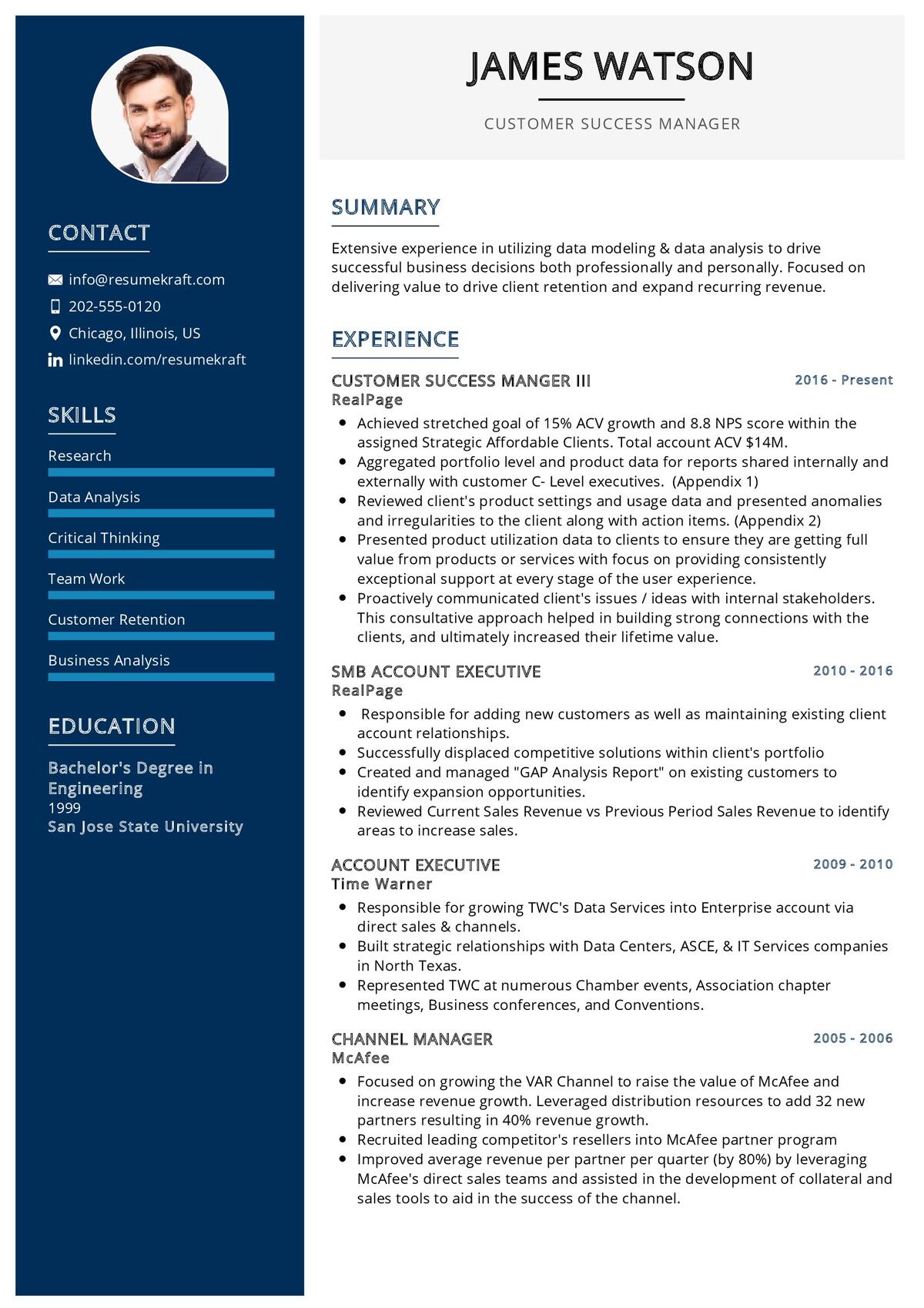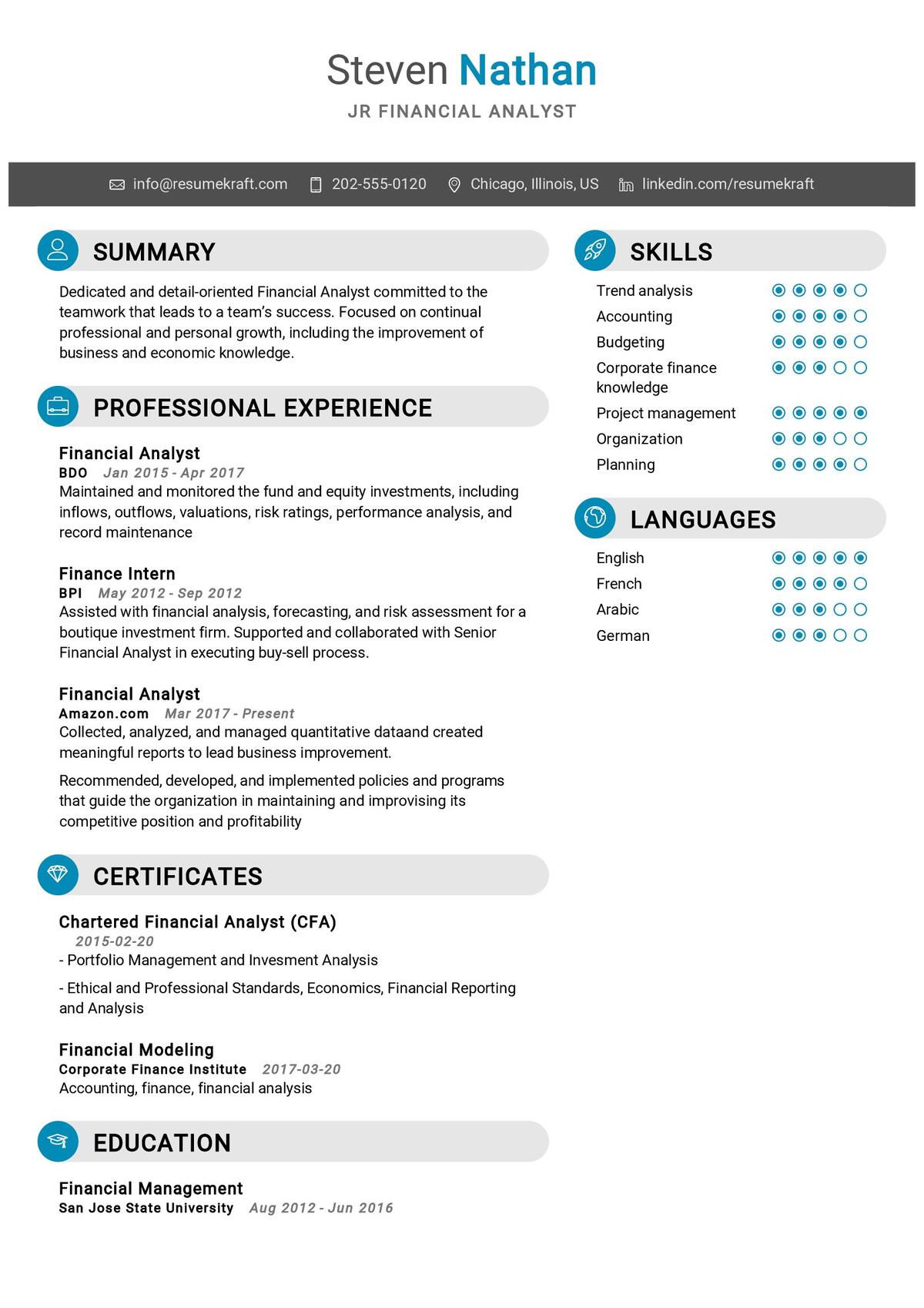
Product design interviews for project managers at companies like Shopify require a unique combination of skills, including product development knowledge, team collaboration, leadership, and problem-solving abilities. As a project manager, you’re responsible for guiding the product design process from concept to completion while ensuring the project aligns with the business objectives. The questions asked during an interview assess your technical expertise, project management skills, understanding of product design, and how you work within a team to achieve the best results.
In this article, we’ll explore the Top 32 Shopify Product Design Interview Questions for Project Managers and provide thoughtful answers to help you prepare. Whether you’re just starting your career or looking to move into a senior role, understanding these questions and how to answer them will give you the confidence you need to excel in your interview.
Build your resume in just 5 minutes with AI.

Top 32 Shopify Product Design Interview Questions for Project Managers
1. How do you manage the product design process from concept to launch?
Managing the product design process involves breaking down the project into clear, manageable phases—conceptualization, design, development, and launch. As a project manager, I ensure that every phase has clear goals and deliverables, and I collaborate closely with designers, developers, and stakeholders to ensure that the product meets the requirements and business objectives. Tracking progress using tools like Trello or Asana helps me keep the team on track and handle any roadblocks that might arise.
Explanation: The answer demonstrates an understanding of the product design lifecycle and emphasizes collaboration and organization skills, which are essential in managing complex design processes.
2. How do you handle feedback from multiple stakeholders in a product design project?
Handling feedback from multiple stakeholders requires prioritization and clear communication. I organize stakeholder feedback sessions, collect input, and then prioritize changes based on impact, feasibility, and alignment with the project’s goals. It’s important to balance different viewpoints without compromising the overall vision of the product. Frequent communication helps to ensure that everyone is aligned.
Explanation: This question assesses your ability to manage competing interests while maintaining the product’s integrity, highlighting your ability to prioritize and communicate effectively.
3. Can you explain a time when you led a product design team through a challenging project?
In one of my past projects, we faced delays due to design revisions based on client feedback. To overcome this, I reorganized the project timeline, identified critical design elements, and implemented daily check-ins with the team. This approach helped us focus on priorities and meet the revised deadline while ensuring the quality of the design was maintained.
Explanation: The question seeks to evaluate leadership skills, problem-solving, and adaptability. A strong answer shows how you can turn challenges into opportunities for improvement.
4. How do you ensure that the product design aligns with business goals?
To ensure that product design aligns with business goals, I regularly collaborate with business leaders and stakeholders to understand their objectives. I then translate these goals into clear design requirements, ensuring the product meets user needs while also contributing to the company’s success. Continuous check-ins help keep the project on track.
Explanation: This answer illustrates the ability to connect the dots between business strategy and design, demonstrating a key skill for project managers in product design.
5. What role does user feedback play in product design, and how do you incorporate it?
User feedback is critical in product design because it helps to ensure that the product meets user needs and provides a great experience. I collect user feedback through usability testing, surveys, and beta testing. Once collected, I work with the design and development teams to prioritize and implement changes based on this feedback.
Explanation: The answer demonstrates how user-centered design can lead to better products, showing an understanding of user needs and how to translate that into actionable steps.
6. How do you manage cross-functional teams in a product design project?
Managing cross-functional teams requires excellent communication, organization, and empathy. I make sure every team member understands their role and the overall project goals. By hosting regular meetings, using clear project management tools, and fostering a collaborative environment, I ensure that all teams work in sync and towards the same vision.
Explanation: Cross-functional team management is crucial for project success. This answer shows your ability to unite diverse skill sets toward a common goal.
7. How do you handle tight deadlines in product design projects?
When faced with tight deadlines, I focus on prioritization and efficient resource allocation. I work with the team to break down the project into the most essential tasks, delegate effectively, and set realistic deadlines for each milestone. Additionally, I maintain open lines of communication to address any bottlenecks or unforeseen delays.
Explanation: This answer emphasizes time management and problem-solving, demonstrating your ability to deliver quality work under pressure.
Planning to Write a Resume?
Check our job winning resume samples


8. How do you prioritize tasks in a product design project?
Prioritizing tasks requires understanding the business goals, user needs, and technical feasibility of each design element. I use prioritization frameworks like the MoSCoW method (Must Have, Should Have, Could Have, and Won’t Have) to categorize tasks and ensure the most impactful features are tackled first.
Explanation: The ability to prioritize is critical in any project management role, and this answer shows your strategic approach to decision-making.
9. Can you walk me through your approach to product testing during the design phase?
During the design phase, I ensure that testing is iterative and collaborative. I encourage designers to prototype early and conduct usability testing with real users. Feedback from these tests informs necessary design adjustments before moving into full-scale development.
Explanation: This answer demonstrates a proactive approach to testing, highlighting your ability to identify and resolve issues early in the design process.
10. How do you balance creativity and functionality in product design?
Balancing creativity and functionality requires close collaboration between designers and developers. I encourage creative brainstorming sessions while keeping the technical constraints and business objectives in mind. We prioritize user needs and ensure that the creative aspects do not compromise the product’s functionality.
Explanation: The answer shows an understanding of the importance of both creative and technical aspects in product design and how to balance them effectively.
11. What tools do you use for managing product design projects?
I use tools like Figma or Sketch for design collaboration, Jira or Asana for task management, and Slack or Microsoft Teams for communication. These tools help streamline the design process, track progress, and ensure that the entire team is on the same page.
Explanation: Project management tools are essential in keeping everything organized. This answer shows your familiarity with commonly used tools in the industry.
12. How do you handle scope creep in product design?
To handle scope creep, I set clear boundaries and expectations at the start of the project. Any requested changes that arise mid-project are reviewed and evaluated for their impact on timelines, resources, and objectives. If the change is necessary, I communicate the implications to stakeholders and adjust the project plan accordingly.
Explanation: Scope creep can derail projects. This answer demonstrates your ability to manage expectations and keep projects within scope.
13. How do you ensure consistent communication across teams?
Consistent communication is key to successful project management. I hold regular team meetings, send out status updates, and ensure all team members have access to project information through tools like Slack or a project management platform. This transparency helps avoid misunderstandings and keeps everyone aligned.
Explanation: Clear communication ensures that all teams are on the same page. The answer shows how you maintain transparency throughout the project lifecycle.
14. How do you measure the success of a product design?
Success in product design is measured by how well it meets the user’s needs and the business’s objectives. Key performance indicators (KPIs) such as user satisfaction, engagement metrics, and business outcomes like conversion rates are used to gauge the effectiveness of the design.
Explanation: Measuring success is crucial for continuous improvement. This answer highlights the use of KPIs in assessing product performance.
15. Can you describe a time when a product design did not meet expectations and how you handled it?
In one case, a product design failed to meet the user’s needs due to insufficient user research. After realizing this, we conducted additional research, redesigned the product based on the new insights, and rolled out an improved version. I took full responsibility and ensured that the lessons learned were applied to future projects.
Explanation: This answer demonstrates accountability and a commitment to learning from mistakes, two key traits for a successful project manager.
16. How do you manage design revisions in a project?
Managing design revisions involves creating a structured process for receiving feedback, making changes, and documenting the decisions made. I work closely with stakeholders and the design team to prioritize revisions and ensure that changes do not derail the project timeline or objectives.
Explanation: Handling revisions efficiently is vital to staying on schedule. This answer shows your organizational skills and ability to manage changes.
17. How do you keep up with the latest trends and technologies in product design?
I stay updated with the latest trends and technologies by following industry blogs, attending webinars, participating in online forums, and reading design publications. I also encourage my team to engage in professional development and knowledge sharing to ensure that we’re always innovating.
Explanation: Keeping up with trends shows your commitment to innovation, which is crucial in the fast-paced world of product design.
18. How do you handle disagreements between design and development teams?
When disagreements arise between the design and development teams, I act as a mediator, facilitating discussions to ensure that both sides understand each other’s perspectives. We work together to find a compromise that balances design intent with technical feasibility, always prioritizing the product’s overall goals.
Explanation: This answer highlights your role as a mediator and problem-solver, essential for managing cross-functional teams.
19. How do you ensure that a product is accessible to all users?
To ensure accessibility, I incorporate accessibility standards like WCAG 2.1 into the design
process. I work closely with designers and developers to ensure that elements such as color contrast, font size, and navigation are accessible to all users, including those with disabilities.
Explanation: Accessibility is a key consideration in product design. This answer demonstrates your commitment to creating inclusive products.
20. What strategies do you use to keep your team motivated during long projects?
To keep my team motivated, I celebrate small wins, encourage collaboration, and ensure a healthy work-life balance. I also offer opportunities for professional development and provide regular feedback to help them grow. Recognizing individual contributions goes a long way in maintaining morale.
Explanation: Keeping a team motivated is crucial for long-term success. This answer shows your ability to inspire and support your team.
21. How do you handle project risks in product design?
I handle project risks by identifying potential risks early and creating mitigation strategies. This might involve adjusting timelines, reallocating resources, or bringing in additional support. I also maintain a risk log to track any issues that arise and how they are being managed.
Explanation: Risk management is critical in project management. This answer demonstrates your proactive approach to preventing issues.
22. How do you handle user testing and feedback in product design?
I incorporate user testing at multiple stages of the design process, from wireframes to final prototypes. I gather qualitative and quantitative feedback from real users, then collaborate with the design and development teams to implement necessary changes based on this feedback.
Explanation: User feedback is essential for improving product design. This answer shows your understanding of iterative testing and improvement.
23. How do you ensure that the design is scalable as the product grows?
Ensuring scalability starts with planning. I collaborate with designers and developers to create a flexible design system that can accommodate future features and growth. This involves using modular components and ensuring that the underlying architecture can handle increased traffic or complexity.
Explanation: Scalability is vital for long-term product success. This answer shows your foresight in planning for future growth.
24. How do you approach budget management in product design projects?
I approach budget management by creating a detailed project plan that outlines all expected costs, including design, development, and testing phases. I track expenses throughout the project and make adjustments as needed to ensure we stay within budget while delivering a high-quality product.
Explanation: Budget management is a critical aspect of any project. This answer demonstrates your ability to manage resources effectively.
25. How do you ensure the product design meets Shopify’s brand guidelines?
To ensure that the product design aligns with Shopify’s brand guidelines, I work closely with the design team to familiarize them with the brand’s visual language and values. We regularly reference Shopify’s design documentation and conduct reviews to ensure consistency throughout the project.
Explanation: Brand consistency is key for maintaining identity. This answer shows your attention to detail and commitment to aligning with Shopify’s standards.
26. How do you handle feedback that you don’t agree with?
When I receive feedback that I don’t agree with, I take time to understand the rationale behind it. I open a discussion with the feedback provider to clarify their points and, if necessary, explain my perspective. Ultimately, I prioritize what is best for the product, even if that means compromising my own views.
Explanation: Handling feedback professionally is essential in product management. This answer demonstrates your open-mindedness and ability to collaborate.

Build your resume in 5 minutes
Our resume builder is easy to use and will help you create a resume that is ATS-friendly and will stand out from the crowd.
27. How do you ensure a smooth handoff between the design and development teams?
I ensure a smooth handoff by organizing detailed design documentation and setting up meetings between the design and development teams. This helps clarify any questions and ensures that the design is implemented as intended. I also make myself available to address any issues that arise during the transition.
Explanation: A smooth handoff is key to successful project completion. This answer shows your organizational skills and attention to detail.
28. How do you measure the success of a product post-launch?
Post-launch, I measure success by tracking user engagement metrics, gathering customer feedback, and analyzing business outcomes such as revenue growth or user retention. I collaborate with the analytics team to evaluate these metrics and identify areas for future improvement.
Explanation: Post-launch metrics provide insights into the product’s performance. This answer highlights your focus on continuous improvement.
29. How do you manage remote teams in product design?
Managing remote teams requires clear communication and collaboration tools like Slack, Zoom, and project management software. I establish clear goals, regular check-ins, and encourage open lines of communication to ensure that all team members stay engaged and aligned, despite working in different locations.
Explanation: Remote work management is increasingly important. This answer shows your adaptability in managing distributed teams.
30. How do you handle a situation where the project is running behind schedule?
When a project is running behind schedule, I first assess the root cause of the delay. I then work with the team to re-prioritize tasks, possibly extend deadlines, or bring in additional resources if needed. Clear communication with stakeholders ensures that everyone is aware of the changes and their impact.
Explanation: Managing delays is a key skill in project management. This answer demonstrates your ability to stay calm under pressure and find solutions.
31. How do you maintain quality throughout the product design process?
I maintain quality by conducting regular reviews at each phase of the project. I encourage feedback from all stakeholders, prioritize thorough testing, and ensure that the design team adheres to best practices and guidelines. This helps catch any issues early and ensures the product meets high standards.
Explanation: Maintaining quality requires attention to detail throughout the project. This answer highlights your commitment to delivering high-quality results.
32. How do you manage customer expectations in product design?
Managing customer expectations involves clear communication from the start of the project. I set realistic timelines, keep stakeholders informed of progress, and ensure that any changes are communicated promptly. By setting the right expectations early, I reduce the risk of dissatisfaction later.
Explanation: Managing expectations is crucial for customer satisfaction. This answer demonstrates your communication skills and focus on transparency.
Conclusion
Product design interviews for project managers at Shopify are designed to assess your technical knowledge, problem-solving skills, and ability to manage complex, cross-functional teams. By understanding and preparing for the questions highlighted above, you can confidently showcase your experience and leadership capabilities in guiding product design projects from concept to launch. Demonstrating how you align business goals, user needs, and design creativity will position you as a strong candidate in your interview.
Recommended Reading:

